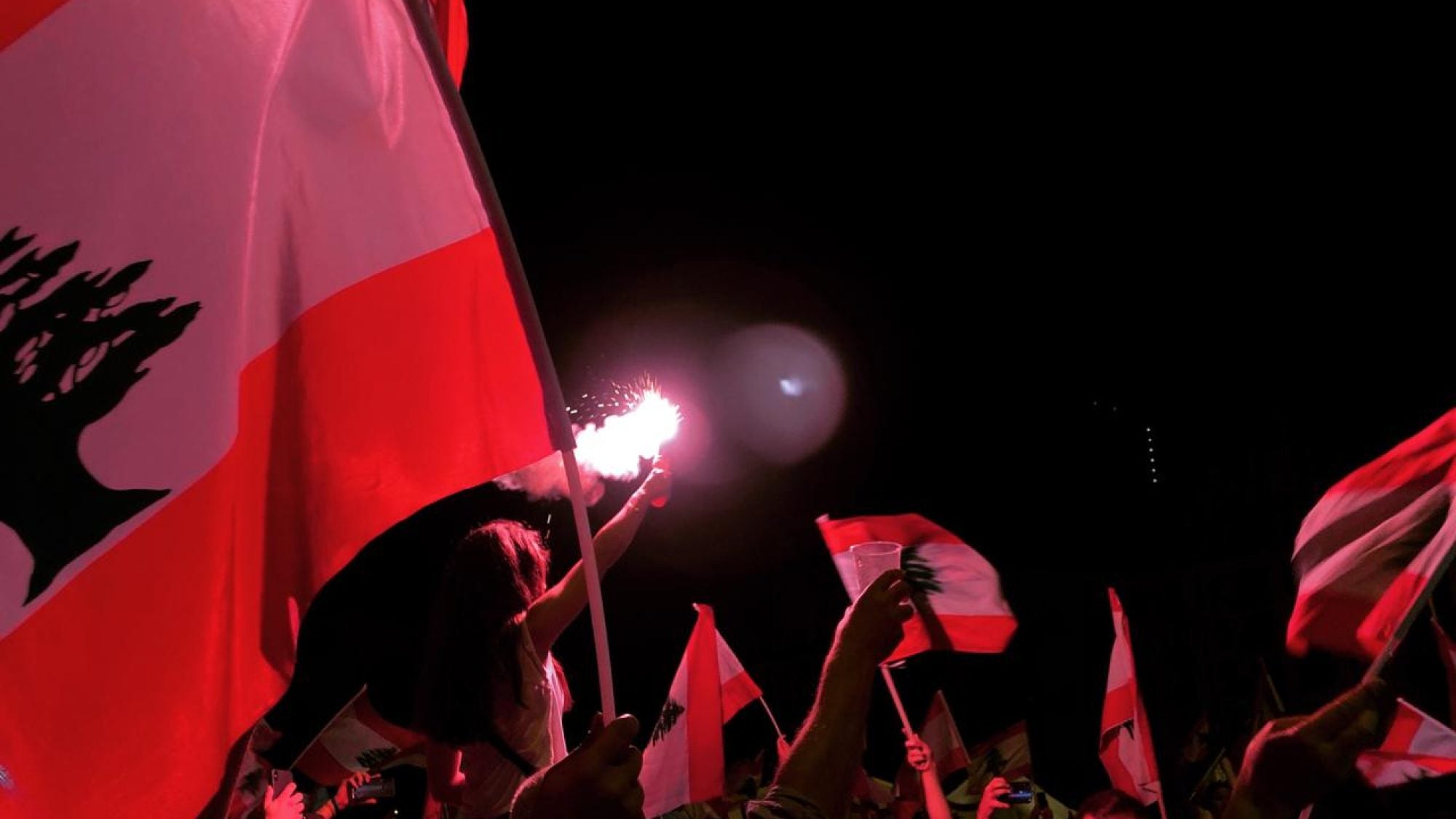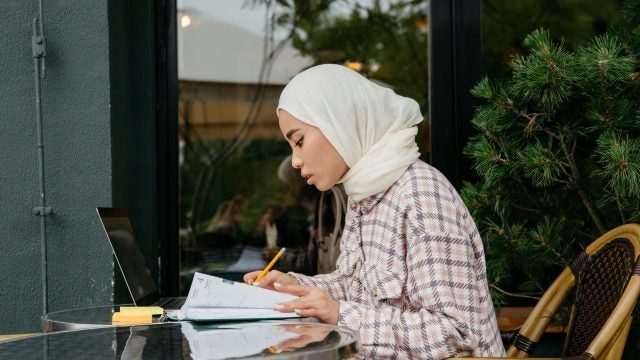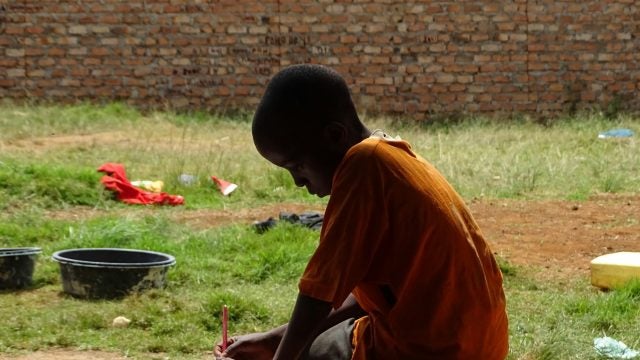
Title: An Identity Quandary in Lebanon
Spanning from Lebanon’s inception to the influx of refugees during and after the Syrian War, Syrian influence has significantly shaped the nation’s demographic landscape and societal fabric. Not only has this influence engendered a fusion of Syrian and Lebanese cultures and fostered hybrid identities, but it has concurrently reinforced sectarian divisions that overshadow individual expression and marginalize non-conforming individuals. In the quest for a more inclusive Lebanese society, one must examine the complex narratives of cultural reproduction and identity politics within the country and beyond.
Lebanese Identity and Syrian Presence
Identity formation in Lebanon–how individuals define themselves and how society defines them–is a multifaceted process deeply influenced by a complex web of historical, social, and geopolitical factors. The academic framework of intersectionality plays a pivotal role in understanding the intricate layers of identities within the Lebanese context, especially with the backdrop of Syrian influence and presence. This presence, in its historical ties and a large refugee population, further complicates the sociocultural landscape by adding yet another layer.
The enduring Syrian presence in Lebanon has woven an intricate tapestry of identities within the country, expanding and contracting various social and cultural categories in the process. Dating back to the founding of the Lebanese Republic and the recent influx of refugees, this presence has fostered intercultural exchanges and collaborations, creating hybrid identities that blend elements of Syrian and Lebanese culture. However, it has also narrowed national identities by perpetuating societal divisions and tensions that reinforce sectarian and political affiliations. Socio-cultural developments within Lebanon due to the Syrian influence merit a deeper analysis that comprehends the intricacies of political discourse and identity formation as they are exchanged and contested.
On Reinforcing Established Identities
Lebanon’s Civil War deeply scarred its socio-political landscape, fracturing the nation along religious and sectarian lines. The conflict exacerbated existing divisions among religious communities such as the Maronite Christians, Sunni Muslims, Shia Muslims, and others, while also giving rise to the prominence of tribes and clans as protectors within these communities.
Following the Civil War, the Syrian occupation of Lebanon until 2005 further complicated these established identities. While the occupation initially aimed to “stabilize” Lebanon, it perpetuated divisions by creating a new hierarchy in the nation’s political, social, and economic spheres, which often favored certain sects or groups over others, especially those willing to negotiate with the Syrian regime. By 2015, mainstream support for refugees from Syria had dissipated, and local and national governments sought to control their impact on Lebanese identity through measures that eliminated the possibilities for citizenship and integration into Lebanese society. This process has in turn created a distinct social divide between refugees and citizens.
These stringent policies aimed at limiting Syrian integration have strengthened existing sectarian and religious identities, particularly by deepening existing patronage networks and deputizing political parties and sectarian elites as the defenders of Lebanese national identity rather than the government. As Lebanese communities grapple with the socio-economic repercussions of hosting a large refugee population amid economic collapse, these developments have snowballed. The inability to transcend dated societal divides restricts the potential for organic growth, dialogue, and the development of more inclusive and nuanced personal expression, leaving Lebanon’s social fabric constrained within these historical boundaries.
While established identities have been further entrenched by the presence of Syrian refugees, there has also been an emergence of new identities rooted in shared experiences of displacement and survival.
On Challenging and Crafting “New” Identities
Following the end of the war, the open-border policy between Syria and Lebanon allowed unrestricted movement of goods and people without passports, facilitating a cross-border flow of cultural and economic influences. This interaction shaped new identities across class, gender, and socio-cultural practices, as individuals navigated shifting socio-political landscapes and adapted to the changing dynamics between the two countries. While the border has become more restricted since 2005, cross-border exchange remains.
Currently, the challenges that new forms of expression face are hard to surmount, as new identities themselves are contested; their very existence poses a threat to established categories (i.e., religious sect and the patriarchal family). For instance, sectarian leaders habitually utilize victim narratives to “keep their fellow sect members in line.” As Lebanon is a country of demographic diversity, each community’s assumed size relative to the others is used to demonstrate past or present marginalization. The resulting competing narratives of victimhood act to reinforce each other. The act of experiencing and surviving trauma brought on by one’s sect identity is a key aspect of being Lebanese. However, this rarely elicits sympathy for those identities (such as gender) that also encounter significant trauma yet do not fit into established acceptability.
Beyond polarizing rhetoric, state processes work in tandem with patriarchal and group cultural traditions to maintain established sectarian, spatial, gender, and even class identities. Central to this ongoing boundary (re)creation is the ikhraj eid aaili, or “family document,” that lays out how individuals are grouped and subsequently categorized by the state. This system clearly demarcates who “belongs” and “how.” Identities that do not fall neatly into the prescribed categories are not official and thus remain unrecognized by the socio-political establishment, despite their centrality to individual experience.
For example, while a Syrian woman can gain citizenship by marrying into a Lebanese family, a Syrian man cannot gain Lebanese citizenship through marriage to a Lebanese woman. Members of sexual and gender minorities also find themselves outside of the formalized identities and family structures recognized by the state – ultimately necessitating a conversation around the broadening of categories and inclusivity.
Some suggest overhauling Lebanon’s sect-based system to allow for an unmediated relationship between the individual citizen and the state, allowing for the inclusion of more identities and creating legal equality between citizens. While this would be a straightforward reform, virtually all elites categorically reject the disassembly of the traditional patriarchal family as threatening the dissolution of Lebanese society itself, rendering this reform essentially unfeasible.
The Role of Geography
In discussing the complexities of Lebanese identity, it is imperative to scrutinize the intertwined dynamics of physical geography. The postwar securitization of urban environments stands as a poignant example of this intricate interplay. Following the Civil War, Lebanon witnessed a significant shift towards fortifying its urban spaces, a response rooted in lingering traumas and fears from that era of conflict. This securitization, aimed at safeguarding against potential threats, contributed to reinforcing sectarian identities.
This fortification takes on added significance amid the current presence of Syrian refugees, highlighting how historical legacies intersect with contemporary realities to mold Lebanese identity. Syrian refugee settlement reflects their often unofficial status, as the Lebanese government has never allowed official refugee camps, pushing poorer Syrian refugees into ad hoc settlements in marginal spaces, while Syrians with greater resources compete for housing with poor and working-class Lebanese. Both the nearness and the remoteness of Syria and its people have resulted in a spectrum of interaction.
In other words, the physical reality of Lebanon, including its natural geography and the anthropogenic environment of the city and countryside, both facilitates and limits identity creation and maintenance. For instance, rural areas have long allowed for group solidarity through isolation–even across international boundaries where Syrian and Lebanese identify with shared tribes or clans over their de jure nationalities. Coastal cities have provided opportunities for socio-economic interaction that necessitate political engagement to address common challenges. This exchange is complemented by the creation of collaborative humanitarian and grassroots endeavors, cross-cultural initiatives, and a flourishing of mixed Syrian-Lebanese identity and expression. This co-mingling creates a novel space, albeit a small one, for weakening of the rigid identities that serve neither Lebanese nor Syrians, and that neither group solely identifies with.
Moving Forward
Cross-cultural initiatives and grassroots endeavors between Lebanese and Syrian communities provide a tangible framework for addressing the complexities of identity and coexistence within the Lebanese context, one that better balances the individual and collective needs of the community. Currently, these efforts often manifest in shared cultural events, language exchange programs, vocational training initiatives, and collaborative economic ventures. By further amplifying and institutionalizing such initiatives, both at the grassroots level and through government support, Lebanon can chart a path towards a more inclusive and nuanced perspective on identity and lay the groundwork for a more harmonious and resilient society in the long term.
. . .
Dr. Jasmin Lilian Diab (she/هي) is a scholar and expert in Migration, Gender, and Conflict Studies. Dr. Diab is the Director of the Institute for Migration Studies at the Lebanese American University, where she also serves as an Assistant Professor and Coordinator of Migration Studies. Between 2022 and 2023, she served as the United Nations University Centre for Policy Research’s first Global Fellow on Migration and Inequality. Dr. Diab is a Research Affiliate at the Centre for Refugee Studies at York University, a Global Fellow at Brown University’s Center for Human Rights and Humanitarian Studies, as well as a Visiting Fellow at the University of Cambridge and the Centre for Lebanese Studies’ British Academy Bilateral Research Chair on Education in Conflict. As of recently, she is a Visiting Professor at the United Nations-mandated University for Peace at their Peace and Conflict Studies Department.
Dr. Jennifer Skulte-Ouaiss (she/her) is a Senior Research Fellow at the Institute for Migration Studies at the Lebanese American University, where she also serves as Director of the Title IX Office–Diversity, Equity and Inclusion and Gender Expert for the MEPI-Tomorrow’s Leaders program. She balances her practical work on mainstreaming gender equity at the university with research and teaching on comparative politics, with a focus on the intersections of identity, gender, migration, and citizenship.
Image Credit: Wikimedia Commons
Recommended Articles

Amid stalled U.S. federal climate engagement and intensifying transatlantic climate risks, subnational diplomacy has emerged as a resilient avenue for cooperation. This article proposes a Transatlantic Subnational Resilience Framework (TSRF)…

The 1997 hijab ban in Türkiye left lasting effects on Muslim women’s psychological, social, and religious identities, shaping their experiences across academia, bureaucracy, and politics. Evidence from interviews…

This article advances the idea that teaching children their mother tongues and learning adjacent national languages offers better prospects for consolidating nation-building and contributing to cultural preservation. Kenya’s case illustrates…